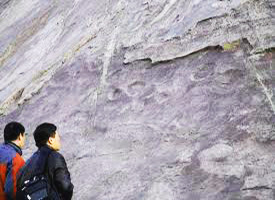
Hundreds of dinosaur footpath from the Late Jurassic (about 140 million to 150 million years ago) has been originate along the core zone of Yanqing Silicified Wood National Geopark by Zhang Jianping, a geologist from China University of Geosciences through his field work late 2011.
The tracks range in length from 15 to 60 centimeters and were laid about 150 million years ago in what is now the Yanqing Silicified Wood National Geopark, near 15 kilometers from the town of Beijing’s north suburban Yanqing county.

"As they are exceptional, high-speed theropod tracks disclose aspects of their paleoethology,” said Zhang Jianping. “The dinosaur tracks from Yanqing comprise the initial proof of dinosaurs in Beijing and as the mine continues, there could be more track findings.”
A dinosaur geopark will be built in the area where the dinosaur footpath is found, according to Yuan Guixu, director of Yanqing Tourism management. “Once the dinosaur park is finished, it will unlock to the tourists,” said Yuan.



